Energy & Commodities
 A significant Price Decline for Oil and Energy Stocks Expected Over Next Two Quarters- SELL
A significant Price Decline for Oil and Energy Stocks Expected Over Next Two Quarters- SELL
Also in this very detailed report from Josef, who was one of the most profound & popular speakers at the World Outlook Conference Feburary 1st/2014:
The High Impact Drilling Watch List
Research Updates:
Long Run Exploration Ltd. (LRE-T)
Sterling Resources (SLG-V)
Recommended Buy List
…..read this great report HERE
About Josef Schachter
The Schachter Asset Management Inc. team provides energy investment research to Maison Placements – an institutional investment firm – and their institutional clients. The research package includes overview and commodity analyses and forecasts as well as research coverage on Canadian domiciled domestic and international focused oil and gas companies. SAMI also provides energy industry presentations to various other industry related business groups.
The principal of Schachter Asset Management Inc., Josef Schachter, CFA, CMA, has over 35 years of experience in oil and gas investment management. Previously, from 1991 to 1996 Mr. Schachter was with Richardson Greenshields where he was a Director, Chief Market Strategist and a member of its investment policy committee. Josef is a regular commentator on BNN TV as well as various radio shows.

 Natural gas inventories fell by 48 bcf last week, below expectations.
Natural gas inventories fell by 48 bcf last week, below expectations.
Natural gas was last trading higher by close to 3 percent to $4.35/mmbtu after the Energy Information Administration reported that operators withdrew 48 billion cubic feet from storage last week, below the 55 to 60 bcf that most analysts were expecting.
The latest withdrawal was below last year’s draw of 62 bcf, but above the five-year average draw of 30 bcf.
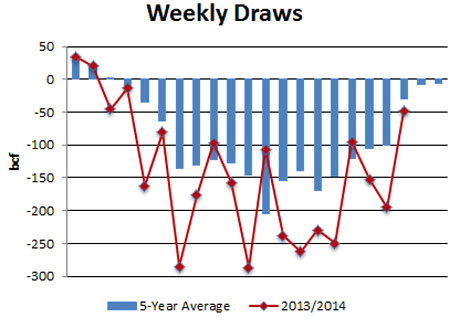
In turn, inventories now stand at 953 bcf, which is 923 bcf below the year-ago level and 875 bcf below the five-year average (calculated using a slightly different methodology than the EIA).
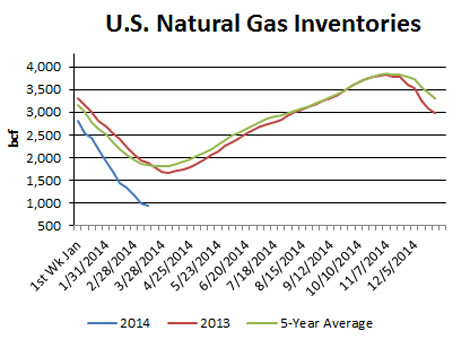
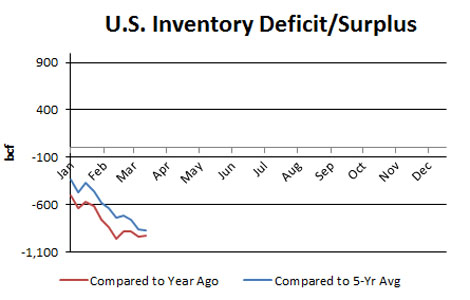

“putting your money where the market is”
Here’s an Unexpected Vote For Coal
There’s a lot of money to be made spotting market bottoms in commodities. Buying producers and projects at ultra-low valuations, before the inevitable uptick in a sector.
Market commentaries are a key indicator in this regard. With bottoms usually being marked by “irrational apathy”–illogical reasoning from market bears who’ve simply been spooked by falling valuations in unloved sectors.
There’s been a lot of such sentiment lately in coal.
I was particularly struck by one comment the last few weeks. From a high-profile market analyst, who noted that Asian coal demand can be written off as a market driver. Because no one in this part of the world wants to build new coal-fired power plants.
It’s striking how such analysis flies in the face of actual events on the ground. In fact, just this week we got news of one high-profile energy consumer that’s actively looking to add more coal power to its supply mix.
That’s Tokyo Gas, Japan’s largest municipal natural gas utility. Whose managers told a major power conference that the firm has “strong interest” in building new coal-fired power plants in order to diversify energy supply.
The comments came from Tokyo Gas executive officer and senior general manager Kunio Nohata. Who told the Gastech conference in Goyang, South Korea that his company “may have a coal-fired power plant in the future or at least, we may buy electricity from coal-fired power plants.”
The move comes as Japanese utilities come under increasing pressure to cut fuel costs. With prices for alternative fuels like LNG still running at very high levels here compared to other parts of the world.
At the very least, this shows that big players are still receptive to coal. At the most, it could signal a wave of increasing coal demand as power producers increasingly come to rely on this cheap and reliable baseload fuel.
We’re seeing the same story in India, East Africa and Southeast Asia. If analysts are saying otherwise, it might be time to be looking for a bottom in this sector.
Here’s to putting your money where the market is,

 The global boom in agriculture investments is nowhere near over, nor are rising food prices, despite recent numbers from the FAO. The UN’s Food and Agriculture Organization reports that world food prices are relatively stable, and well below the highs we saw in 2011. The World Bank agrees, and is reporting stable and declining global food prices. So should you trust their numbers?
The global boom in agriculture investments is nowhere near over, nor are rising food prices, despite recent numbers from the FAO. The UN’s Food and Agriculture Organization reports that world food prices are relatively stable, and well below the highs we saw in 2011. The World Bank agrees, and is reporting stable and declining global food prices. So should you trust their numbers?
Here’s the reality: Beef prices have just posted their biggest price spike in a decade, and the Wall Street Journal reports that food prices are surging and are expected to rise another 3.5% this year. Riots are breaking out in Venezuela with sky-high food prices partially to blame. More riots can be expected worldwide, as we saw in 2008 and 2011 when there were more than two dozen countries dealing with food-related social chaos.
Droughts, subsidized ethanol production and blistering Chinese demand…..
….much much more HERE

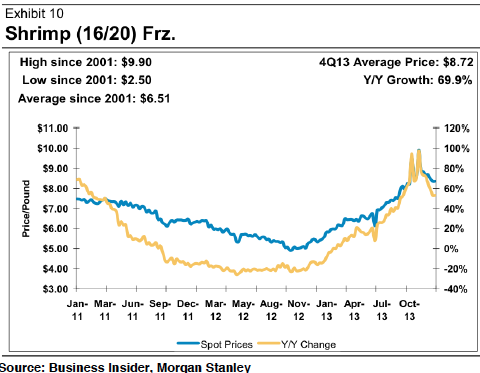

Not surprisingly, as food price increases have started to garner headlines, central banks and governments are pledging to step in and ease the pain:
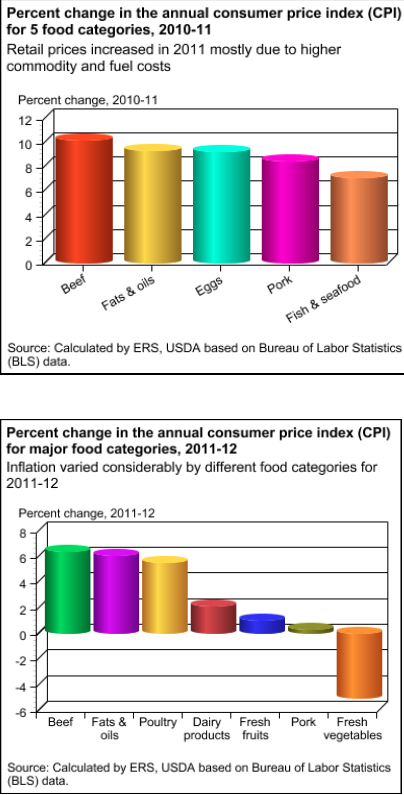
The information in this note is provided solely for users’ general knowledge and is provided “as is”. We at Morning Notes make no warranties, expressed or implied, and disclaim and negate all other warranties, including without limitation, implied warranties or conditions of merchantability, fitness for a particular purpose or non-infringement of intellectual property or other violation of rights. Further, we do not warrant or make any representations concerning the use, validity, accuracy, completeness, likely results or reliability of any claims, statements or information in this note or otherwise relating to such materials or on any websites linked to this note. We act as advisors to Arianne Resources and own shares purchased in the open market.
The content in this note is not intended to be a comprehensive review of all matters and developments, and we assume no responsibility as to its completeness or accuracy. Furthermore, the information in no way should be construed or interpreted as – or as part of – an offering or solicitation of securities. No securities commission or other regulatory authority has in any way passed upon this information and no representation or warranty is made by us to that effect. For a more detailed disclaimer, please go to http://house-mountain.com/disclaimer/.












